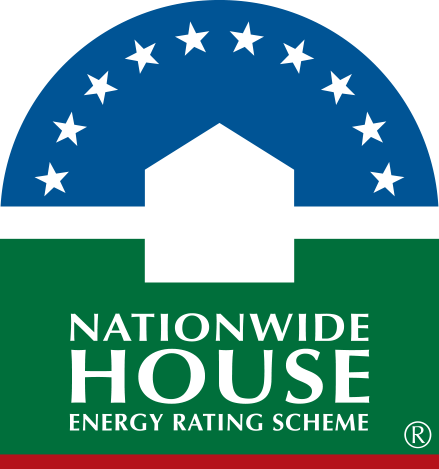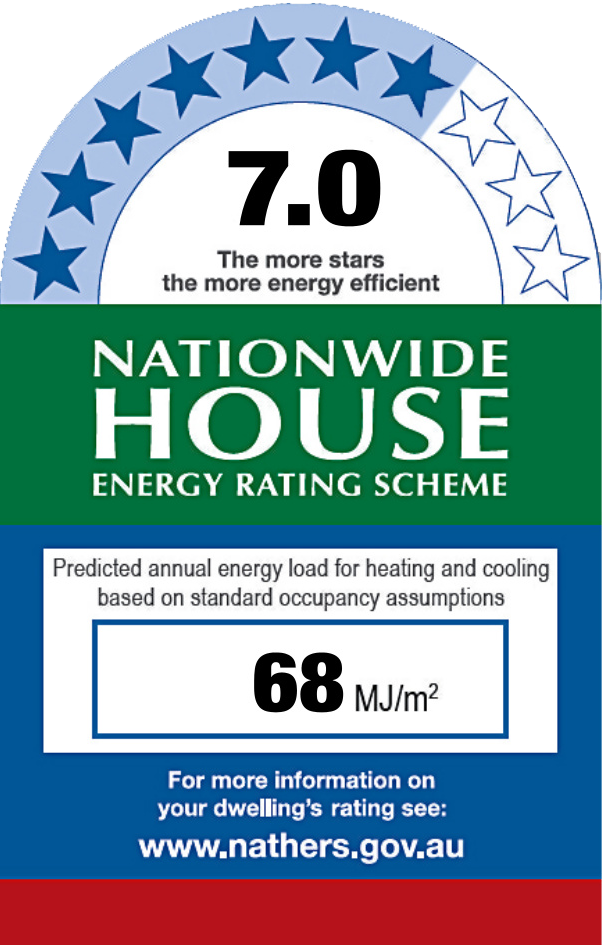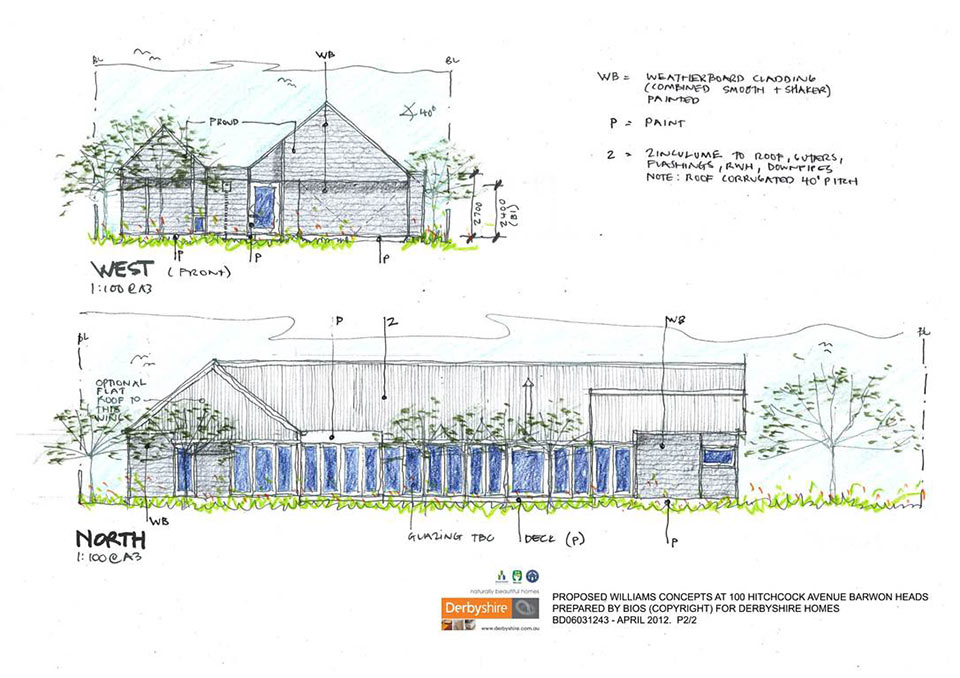House Energy Star Rating, what does it mean?
You’ve heard building companies and architects talking about Energy Star Ratings, but do you actually know what they are referring to? What it means? And what effect it has on the type of house you build?
What is the House Energy Star rating?
The Nationwide House Energy Rating Scheme (NatHERS) is a star rating system (out of ten) that rates the energy efficiency of a home, based on its design.
The House Energy Rating scheme provides a ‘measuring tape’ to estimate a home’s potential heating and cooling energy use, NatHERS helps to make Australian homes more cost effective to heat and cool. This gives people building or buying a new home a guide to the efficiency of the house. Often good design can reduce the amount of energy needed to keep a home comfortable with no or little additional construction cost. The more Energy Efficient a house is the higher the rating.
Our overall understanding of house design and energy efficiency has come along way. Houses built in 1990 averaged about 1 star on the scale. And before the introduction of national energy efficiency regulations for houses in 2003, less than 1 per cent of Australian houses achieved 5 stars. These days, however, the national building standard for new homes and renovations is a base of 6 stars.
NatHERS uses computer simulation at design stage to assess the thermal performance of a home. NatHERS looks at elements such as orientation, layout, construction materials, insulation and glazing.
Watch this video for a more detailed understanding of how the rating system works.

What is the Six Star Standard?
All new homes, home renovations, alterations and additions need to comply with the 6 Star Standard in the National Construction Code.
The 6 Star Standard applies to the thermal performance of a home and includes the installation of either:
- A solar hot water system or,
- A rainwater tank for toilet flushing.
A 6 Star Energy efficiency rating applies to your home’s building envelope which includes the roof, walls, floor and windows. 6 Star requirements also include efficiency standards for lighting but does not include plug in appliances eg. microwave, toaster, kettle, TV.
Achieving 6 Star Home compliance requires good consideration at the design stage. Carefully selecting your home’s orientation in relation to the sun’s path can add up to 1 Star rating. It is also worth noting that energy rating does not factor in solar panels.
The 6 Star Advantage
6 Star home are projected to use 24% less energy through heating and cooling compared with 5 Star Homes. This all adds up to savings on your energy bills which is a good thing. The other positive is the impact using less energy has on our environment.
So if 6 Star is the standard then what happens if you consider design options that go beyond minimum regulatory requirements, ultimately you reap the rewards in the long run and will improve the value of your home as more buyers are discovering the advantages to energy efficient design.
What does a Seven Star house look like?
An energy efficient Queenscliff Fisherman’s Cottage with a contemporary edge was the design brief from our client.
We certainly achieved this with a 7 Star Energy rating. The rating was achieved by installing high density insulation under the roof in the ceiling and in all external walls. The polished concrete floor throughout the main living areas attract the heat from the North facing floor to ceiling windows and act as a thermal mass. All windows and doors are double glazed, with timber windows used to minimise heat loss/transfer. The main kitchen/living and dining rooms has a high pitched roof with floor to ceiling windows facing north creating an open light and airy feel and well placed windows on the South give good cross ventilation to the spaces.

What are 8 star and above rated houses made of?
A 9 Star home will use approximately 80 per cent less energy to heat and cool than a 6 Star house, and one tenth of the energy of average existing housing stock. And you can only imagine what it would mean for the utility bills.
So what does it take to make a 9 Star rated house? What technology is used, what materials, and what design tricks can be used to help? We have broken the features, design and technology into different categories, it’s an pretty impressive assemble.
Passive Heating and Cooling Ideas
- Passive solar design, with house orientation and layout to bring sunlight into all living spaces, while windows are aligned to promote breeze paths through house for natural cooling and “night purging.”
- Eaves designed to let in winter sun and block summer sun.
- Double glazed low emissivity coated casement windows & bi-folds to maximise ventilation.
- Polished concrete floor and recycled & bagged Reverse Brick Veneer walls for thermal mass to store heat in winter and cool in summer.
- Highly insulated, tight building fabric.
- Stairwell door and internal louvre windows to regulate thermal stratification.
Hot Water
- Evacuated tube solar hot water system with 315 litre tank instantaneous gas boost (saves approx. 1.5 tonnes of CO2 a year)
Energy-Saving Technology, Design and Features
- LED and compact fluorescent lighting throughout.
- Greenswitch to turn off standby loads at night or when house is vacated.
- A void in the laundry designed as a drying area, where a hanging rack provides evaporative cooling.
Renewable Energy
- Rooftop solar PV system
Insulation
- Bradford Anticon foil-backed blanket and Tontine Thermal Batts in ceiling.
- Bradford Enviroseal reflective foil and Tontine Thermal and Sound Batts in walls.
Water Saving
- Rainwater tanks to run laundry, flush toilets, & water garden with mains backup.
- Redwater valves to direct ‘cold’ hot water, normally wasted, to the watertank
- Greywater gravity diversion system to underground garden distribution
- Water efficient tapware throughout, 7.5 litre per minute shower roses and 3/4.5 litre flush toilets
The ultimate 10 star home
The more energy stars your home has, the more comfortable it is, with less need for heating or cooling. A 10 Star home should need no heating or cooling whatsoever.
The Australian sustainable building guide, Your Home, estimates that 38 per cent of a home’s energy use is for heating and cooling, so a 10 Star home should save significant greenhouse gas emissions and money on bills, year on year.
So why are so few 10 Star homes built in Australia?
Lack of knowledge in the building industry is holding back affordable high-performance solutions, says Tim Adams, principal of F2 Design and former president of the Building Designers Association of Victoria BDAV.
Adams has been instrumental in promoting 10 Star homes in Australia. He helped launch the BDAV’s 10-Star Challenge in 2011, a competition that awards the best 10 Star designs. “The idea behind the contest was to get building designers and energy raters to go through the process of designing a 10 Star house,” he says. “By going through that process they gained an understanding of what’s required to design to 10 Stars, and from then on designing 7 or 8 or 9 Star homes was so much easier.”
Dick Clarke from building design firm Envirotecture agrees: “Striving for 10 Stars is useful as it can develop techniques and materials that will trickle down to make the broad adoption of 8-plus Stars more affordable.”










